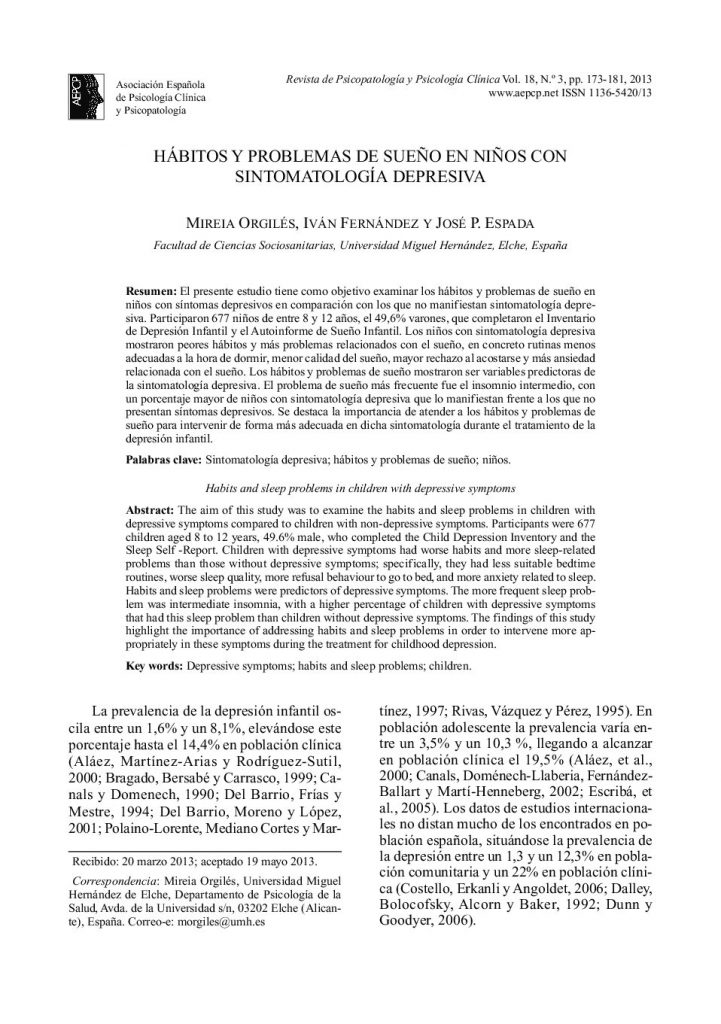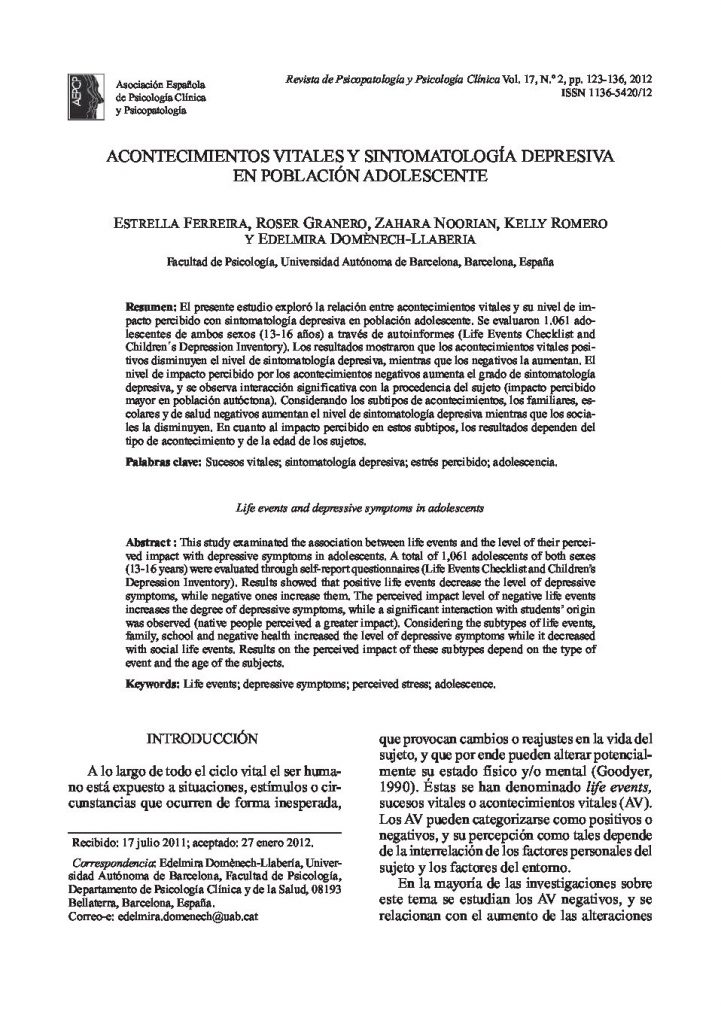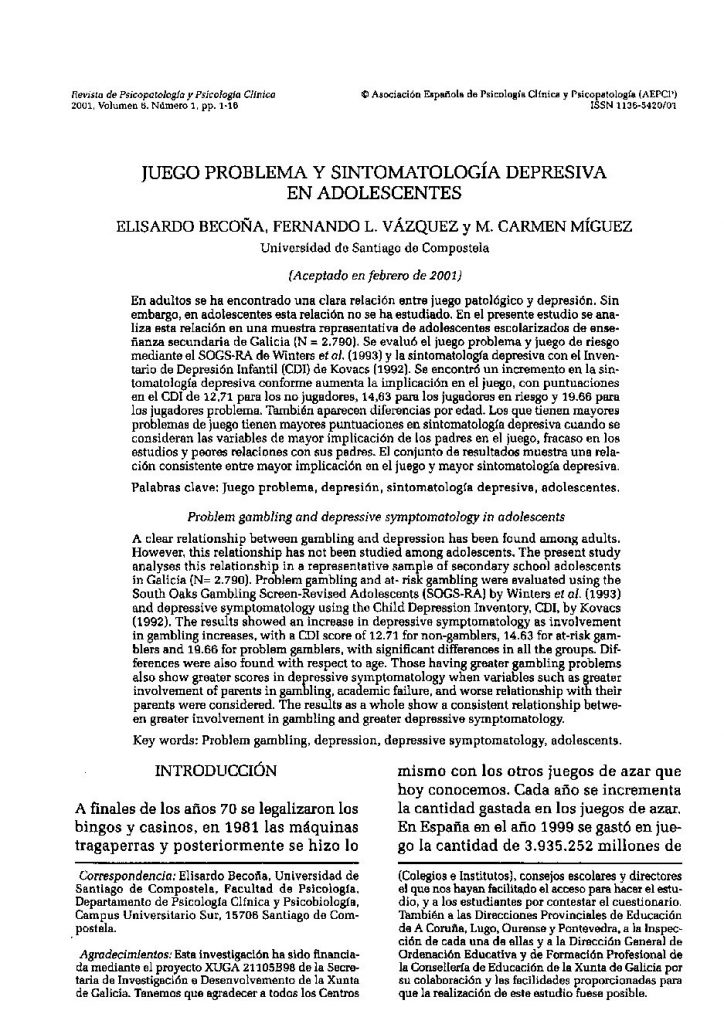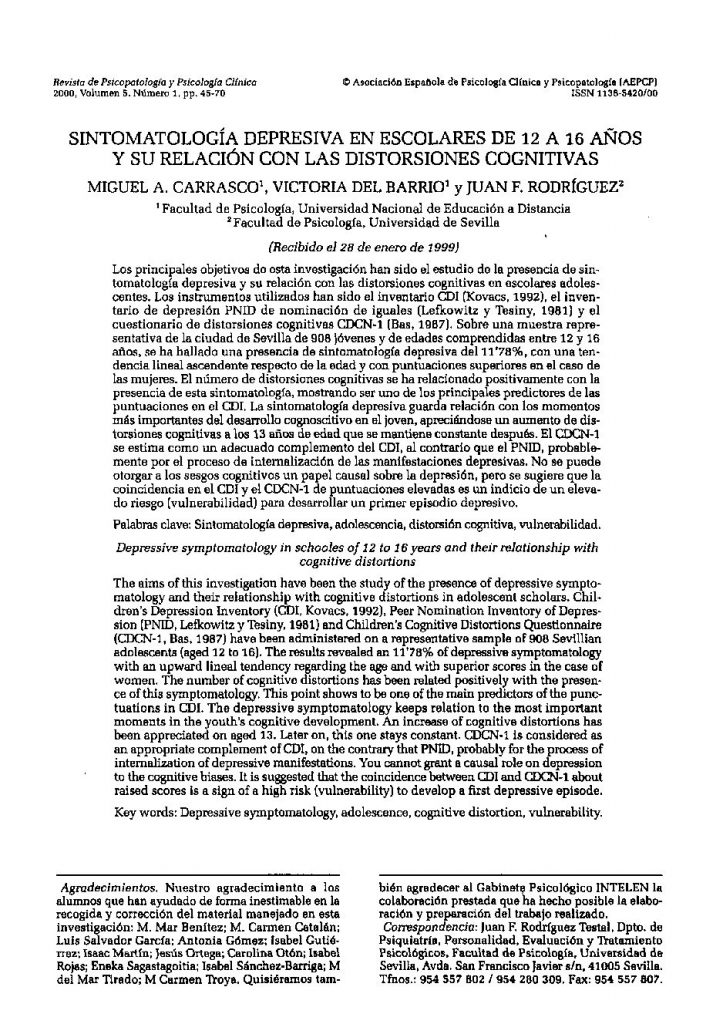Hábitos y problemas de sueño en niños con sintomatología depresiva.

- Hábitos y problemas de sueño en niños con sintomatología depresiva.
- Sexism and Eating Disorders: Gender differences, changes with age, and relations between both constructs.
- Efectos del tipo de diabetes, estrategias de afrontamiento, sexo y optimismo en el apoyo social.
- Training to improve selective attention in children using neurofeedback through play.
- Trastornos leves del espectro autista en educación infantil: Prevalencia, sintomatología co-ocurrente y desarrollo psicosocial.
- Características neuropsicológicas de niños con trastorno negativista desafiante.
- Utilidad de los marcadores biológicos en la detección precoz y prevención del síndrome de burnout.
- DSM-5: ¿Cambio de paradigma en la clasificación de los trastornos mentales?.
- Simons, G. y Hofmann, S. G.(2013). CBT for anxiety disorders: A practitioner book.Chichester (UK): Wiley-Blackwell.
- Geekie, J. y Read, J. (2012). El sentido de la locura. Barcelona: Herder.
- Información sobre criterios de calidad de la Revista de Psicopatología y Psicología Clínica.
The aim of this study was to examine the habits and sleep problems in children with depressive symptoms compared to children with non-depressive symptoms. Participants were 677 children aged 8 to 12 years, 49.6% male, who completed the Child Depression Inventory and the Sleep Self -Report. Children with depressive symptoms had worse habits and more sleep-related problems than those without depressive symptoms; specifically, they had less suitable bedtime routines, worse sleep quality, more refusal behaviour to go to bed, and more anxiety related to sleep. Habits and sleep problems were predictors of depressive symptoms. The more frequent sleep problem was intermediate insomnia, with a higher percentage of children with depressive symptoms that had this sleep problem than children without depressive symptoms. The findings of this study highlight the importance of addressing habits and sleep problems in order to intervene more appropriately in these symptoms during the treatment for childhood depression.
El presente estudio tiene como objetivo examinar los hábitos y problemas de sueño en niños con síntomas depresivos en comparación con los que no manifiestan sintomatología depresiva. Participaron 677 niños de entre 8 y 12 años, el 49,6% varones, que completaron el Inventario de Depresión Infantil y el Autoinforme de Sueño Infantil. Los niños con sintomatología depresiva mostraron peores hábitos y más problemas relacionados con el sueño, en concreto rutinas menos adecuadas a la hora de dormir, menor calidad del sueño, mayor rechazo al acostarse y más ansiedad relacionada con el sueño. Los hábitos y problemas de sueño mostraron ser variables predictoras de la sintomatología depresiva. El problema de sueño más frecuente fue el insomnio intermedio, con un porcentaje mayor de niños con sintomatología depresiva que lo manifiestan frente a los que no presentan síntomas depresivos. Se destaca la importancia de atender a los hábitos y problemas de sueño para intervenir de forma más adecuada en dicha sintomatología durante el tratamiento de la depresión infantil.






